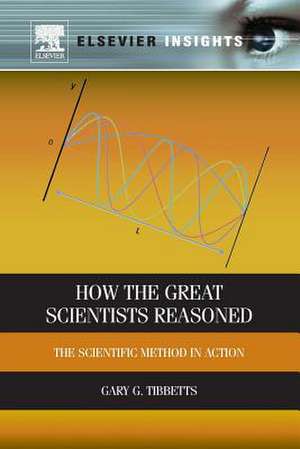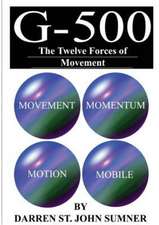How the Great Scientists Reasoned: The Scientific Method in Action
Autor Gary G. Tibbettsen Limba Engleză Paperback – 30 sep 2012
- Places the scientific method in context using historical examples
- Suitable for both scientists and non-scientists looking to better understand scientific reasoning
- Written in an engaging style with clear illustrations and referencing
Preț: 298.44 lei
Nou
Puncte Express: 448
Preț estimativ în valută:
57.12€ • 62.07$ • 48.02£
57.12€ • 62.07$ • 48.02£
Carte tipărită la comandă
Livrare economică 14-28 aprilie
Preluare comenzi: 021 569.72.76
Specificații
ISBN-13: 9780323282673
ISBN-10: 0323282679
Pagini: 160
Dimensiuni: 152 x 229 x 9 mm
Greutate: 0.22 kg
Editura: ELSEVIER SCIENCE
ISBN-10: 0323282679
Pagini: 160
Dimensiuni: 152 x 229 x 9 mm
Greutate: 0.22 kg
Editura: ELSEVIER SCIENCE
Public țintă
Appropriate for students and researchers from all disciplines who want to learn more about historical scientific reasoning.Cuprins
- 1. Introduction
2. Elements of scientific thinking
3. Christopher Columbus discovers the "Indies"
4. Antoine Lavoisier and Joseph Priestley both tested the befuddling phlogiston theory
5. Michael Faraday discovered electromagnetic induction but failed to unify electromagnetism and gravitation
6. Wilhelm Röntgen intended to study cathode rays but ended up discovering x-rays
7. Max Plank, the first superhero of quantum theory, saved the universe from the ultraviolet catastrophe
8. Albert Einstein attacked the problem "Are atoms real?" from several angles
9. Nils Bohr modeled the hydrogen atom as a quantized system with compelling exactness
10. Conclusions, status of science, and lessons for our time
Recenzii
"…physicist Tibbetts (General Motors) humanizes the methods of several scientists, using an easy-to-read style that includes enough detail to satisfy the casual and the professional reader alike…Even readers who are familiar with many of these stories will gain new insights into the thought processes of some of the great scientists."--Choice, July 2013












